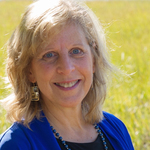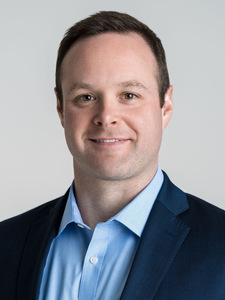Telemedicine a Saving Grace — Unless You’re Poor or Don’t Speak English
// By Marcia Simon, APR //
 Telemedicine came to the rescue when COVID-19 first rattled the capacity and safety of health care delivery. It didn’t take long for hospitals, providers, and patients to embrace the conveniences, especially when federal waivers allowed for expanded access to virtual care services, and payers relaxed their reimbursement guidelines.
Telemedicine came to the rescue when COVID-19 first rattled the capacity and safety of health care delivery. It didn’t take long for hospitals, providers, and patients to embrace the conveniences, especially when federal waivers allowed for expanded access to virtual care services, and payers relaxed their reimbursement guidelines.
Hospitals found that virtual wellness classes and support groups were hassle-free compared to juggling cancellations and schedules. And so, telemedicine is on board to become a routine way to conduct appointments.
But there’s a problem: The pandemic shed light on disparities in health care access. While privileged communities are singing the praises of telehealth, the rise in virtual visits has not carried over to the most vulnerable underserved populations, which have experienced a drop-off in care for chronic conditions since the pandemic began.

Ann Mond Johnson, CEO, American Telemedicine Association
For the most part, American telemedicine platforms are built around the English language, and you need an internet connection to use the platforms. Unfortunately, this doesn’t work for the vulnerable rural poor, many elderly patients, ethnic minorities, and those with low socioeconomic status who experience technology or language barriers, or both. These populations may never get to experience the benefits of telehealth to manage chronic conditions such as diabetes, heart disease, or cancer.
“Just getting access to talk to a provider might require additional language support from a family member, or additional coaching from the provider,” explains Ann Mond Johnson, CEO, American Telemedicine Association (ATA). “Who helps the patient set up the technology?” she asks.
From software setup to portal prompts, all the great advances in telehealth are meaningless when everything is in English and you speak only Vietnamese, for example. Scheduling a virtual visit is not a solution when you don’t have a computer, a smartphone, or WiFi.
It’s More Than Translation
While it’s one thing to grab a friend or family member to translate communication with a physician, it’s quite another to be trained in medical terminology as medical interpreters are.
“The health care industry has not done a good job of reaching out to non-White, non-English-speaking audiences as a whole. Spanish spoken in Mexico is not the same as the Spanish spoken in Argentina, for instance. And it’s not just the language; it’s the culture, the values,” says Mond Johnson.
“The health care industry has not done a good job of reaching out to non-White, non-English-speaking audiences as a whole.”
Ann Mond Johnson
American Telemedicine AssociationTranslation services are moving quickly to fill this video void, climbing on board with telehealth platforms so they can easily be patched in to provide services as needed. American Sign Language interpreters are starting to work more closely with health systems to join visits as video interpreters for patients who are hearing impaired.

Joseph Brennan, telehealth consultant, Moonshot Health Consulting
“Video enhances the experience. It’s very close to walking into an office,” says Joseph Brennan from Moonshot Health Consulting in Grand Rapids, Michigan. “Video appointments allow a physician to maintain eye contact and read a patient’s body language, but telephone is still significant for low-acuity patients, primary care physicians, or a specialist follow-up when you already have measurement or a benchmark from a previous meeting,” he adds. And phone consultations may be necessary for patients who can’t see and can’t travel during a pandemic.
Changes in Reimbursement
“If you asked me before COVID if payers would apply parity to video and even phone consultations, I’d say, ‘No way,’ but these are different times,” says Brennan. The Centers for Medicare and Medicaid Services (CMS) did relax the reimbursement requirements during COVID-19 and implemented waivers to allow for reimbursement of some phone consultation services as well as video visits. This contributed to the rapid surge of telehealth appointments. While providers and supporting organizations push to make these changes permanent, ATA believes much more needs to be done to ensure this level of access to telehealth in the future.
“If you asked me before COVID if payers would apply parity to video and even phone consultations, I’d say, ‘No way,’ but these are different times.”
Joseph Brennan
Moonshot Health Consulting“Consumer protection laws prevent health plans from using certain types of proactive communication. [These laws are] outdated,” says Mond Johnson, adding, “How do we modernize regulation so legislation can catch up to the capability of today’s technology?”
Overcoming Barriers
COVID-19 gives us a new lens to focus on opportunities for providers and payers to expand the use of telehealth for all patients. It is a unique window of time in which payment disparities are largely waived, making it possible to deliver health care that helps to manage chronic disease for a larger population.
Sadly, inflexible health system processes or workflows may get in the way of access. For example, do patients need to go through a portal to access a telemedicine visit? Which languages are supported by portal prompts? How easy is the process to navigate? How are medical interpreters integrated into virtual visits when necessary? How easy is it to find tutorials to set up an initial telemedicine call? Underserved patients need education and training in the digital skills necessary to conduct video visits.
Communication teams can reach out to local populations in ways that telemed platforms aren’t designed to do. With firsthand experience, frontline clinicians may be more aware than leadership when it comes to telemedicine barriers. This is why the clinical team should be represented at communication meetings when discussing the expansion of virtual services. Does your hospital have a system in place to screen for high-risk patients who have no device, internet, privacy, or English literacy? How do you monitor data to evaluate the impact of interventions?
Where Do We Go from Here?
“Telehealth, when deployed across all populations, can be a lifeline,” explains Mond Johnson. ATA advocates to accelerate access so people have safe and appropriate services. “Until we get permanent legislative changes that address FQHC (Federally Qualified Health Centers) and RHC (Rural Health Center) services in underserved areas, it won’t deliver on the promise.”
“We have to reimagine care — reimagine the problems for the end user, whether the barrier is language, income, or a disability. If all we do with technology is replace a face-to-face visit, we are not solving the systemic problems that affect our society,” says Mond Johnson. She emphasizes that health care systems need to build trust and demonstrate commitment in communities to overcome the barriers for virtual care.
Advocates for underserved communities point out that families often need help obtaining devices, such as refurbished laptops, tablets, or smartphones in addition to reliable broadband access for overall educational purposes. Especially in this time of COVID-19, remote access is necessary not just for the classroom but now for telehealth as well. Development of digital infrastructure for federally qualified community health centers has become a topic for community involvement.
Access to virtual visits might originate at popular gathering places such as community centers, neighborhood clinics, or ambulatory facilities affiliated with local hospitals, for patients who need to connect with a specialist or their primary care physician.
The door has been opened. Where we go from here is something that everyone is
trying to figure out. Inequalities plague our society, and the health care system is not immune to this. Telemedicine is seen as a big step in the right direction for those fortunate enough to be on the right side of the digital divide and among America’s English-speaking majority. For everyone else, we’ve come to another bump in the road that needs to be repaved.
Marcia Simon, APR, writes about health care, healthtech, and wellness. As principal of MSE Public Relations, she manages content, strategic communication, and media relations for clients. Email her at marcia@mseusa.com or visit LinkedIn.com/in/marciasimon.
